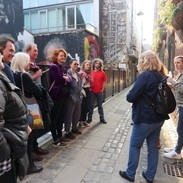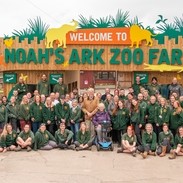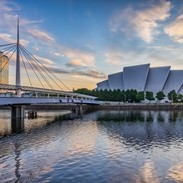2.1. Doughnuts, COP and SDGs
In a nutshell 2.1
In a nutshell
Learn a little about the technical stuff and the global picture.
Try and put it in the context of your business.
Start thinking about what all this really means for you.
Boundaries and doughnuts
Now, we start to get a bit technical. It seems obvious in hindsight that the unprecedented population boom and associated consumption trends of The Great Acceleration would place enormous strain on our planet’s resources. And that is exactly what Johan Rockstrom, and a group of internationally renowned scientists identified in 2009.
Planetary boundaries
They came up with nine environmental parameters within which humanity can develop and thrive for generations to come, so long as they are not exceeded. These planetary boundaries are:
- Climate Change
- Ocean Acidification
- Chemical Pollution
- Fertiliser Use
- Freshwater Withdrawals
- Land Conversion
- Biodiversity Loss
- Air Pollution
- Ozone Layer Depletion.
Social boundaries
In an Oxfam discussion paper of 2012 called A Safe and Just Space for Humanity, Kate Raworth combined the concept of these planetary boundaries with a complementary concept of Social Boundaries – human needs that need to be met to ensure stable societies. They are:
- Food
- Health
- Education
- Income and Work
- Peace and Justice
- Political Voice
- Social Equity
- Gender Equality
- Housing
- Energy
- Water
Boundaries and doughnuts
Doughnut economics
This doughnut represents an environmentally safe and socially just space in which humanity can thrive. It’s also the space in which sustainable economic development can take place – hence the term doughnut economics.
We’re currently overshooting the environmental ceiling in a number of areas including crucially biodiversity loss and climate change. We’re also seeing a shortfall in many of our fundamental social foundations, such as social equity.
For long-term stability and sustainable development, we need to bring these back into the safe economic development zone: ‘The Doughnut’.
Figure: Planetary and Social Boundaries (adapted from Doughnut Economics, Kate Raworth)
Photo by: VisitBritain/VisitEngland

Conference of Parties (COP)
Concerns around climate change (which we talk about in section 2.2.) are leading to growing percentage of global economic players committing, on paper at least, to achieving net zero (discussed in section 2.5.) by 2050. The UK made a legally binding commitment in 2019 to reach net zero by this date, so it is something that all businesses need to understand and keep an eye on.
We will try and keep this as straightforward as possible.
What are COPs
United Nations Climate Change conferences (or COPs, which stands for Conference of Parties) take place every year. They are the world’s only multilateral decision-making forum on climate change with representation from almost every country in the world.
The COP is where nations come together to try and agree on ways to address the climate crisis, such as limiting global temperature rises, helping vulnerable communities adapt to the effects of climate change, and achieving net zero emissions by 2050.
What has come out of COPs
One of the key objectives of recent COPs has been ‘Keeping 1.5 Alive’. 1.5°C is the maximum increase in global temperature that scientists agree is needed to avoid potentially catastrophic consequences for people and our living environment. To achieve this, the world needs to reach net zero by 2050.
The Paris Agreement in 2015 (COP21) also saw the introduction of nationally determined contributions (NRDs). These embody efforts and commitments by each country to reduce its national emissions and adapt to the impacts of climate change.
A prominent global voice at these events is the Intergovernmental Panel on Climate Change (IPCC). This is the United Nations body for assessing the science related to climate change.
Sustainable development goals
In 2015, global governments adopted the 2030 Agenda for Sustainable Development - a shared blueprint for peace and prosperity for people and the planet, now and into the future. At its heart are the United Nations 17 Sustainable Development Goals (SDGs), which are an urgent call for action by all countries.
These SDGs recognise that ending poverty and other deprivations must go hand in hand with strategies that improve health and education, reduce inequality, and spur economic growth – all while tackling climate change and working to preserve our oceans and forests.
While these 17 goals might seem a bit daunting or far removed from day-to-day life, they remind us to ensure we’re approaching things holistically and addressing both social and environmental challenges.
They are global ambitions and therefore also provide us with a framework for reporting our business actions and commitments. For more details, visit the UN Sustainable Development Goals site.
We support the Sustainable Development Goals.
Photo by: United Nations Department of Global Communications

bottom page nav
previous section
next section









